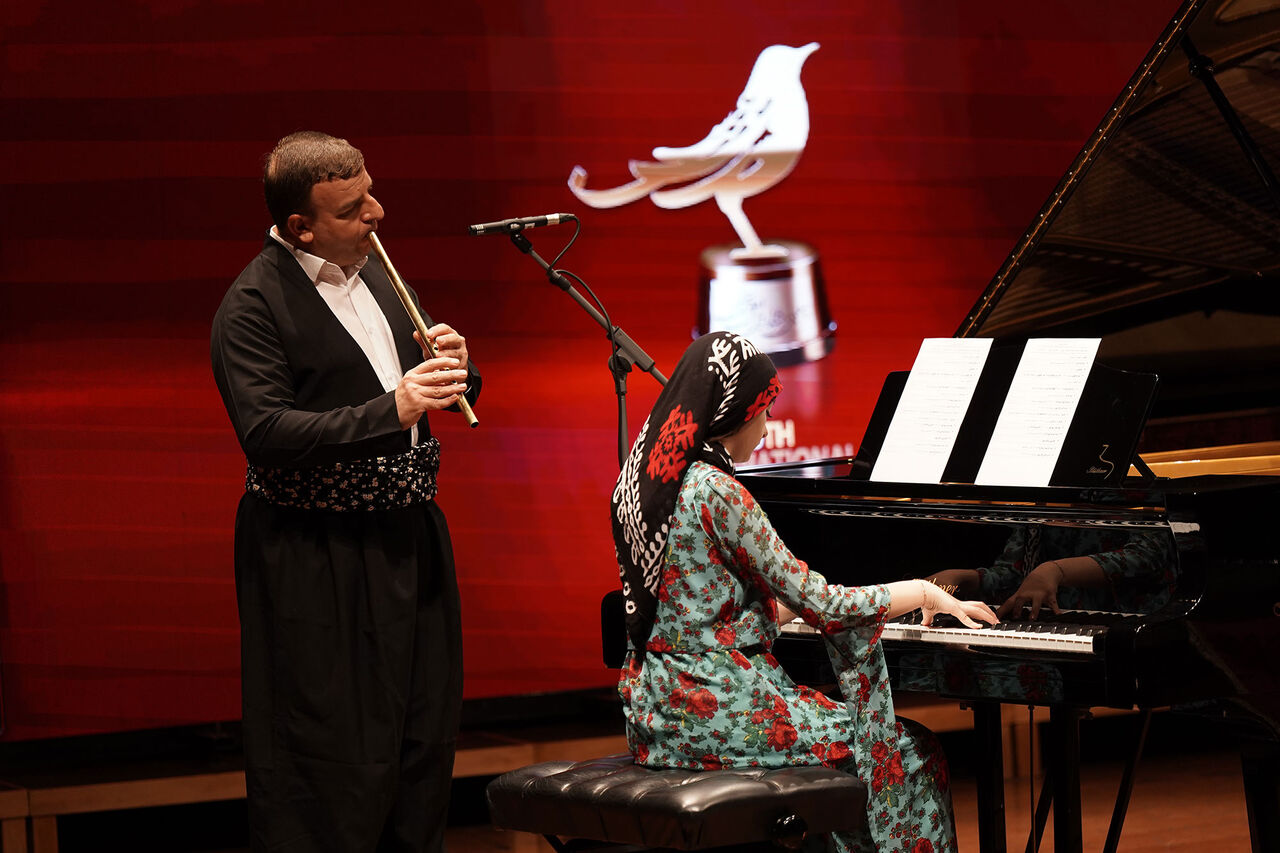
On the fifth day of the 40th Fajr Music Festival, Roudaki Hall at 18:30 hosted artists from the region of Kurdistan. Nasser Mostafapour, a wind instrument player of the shamshal, appeared on stage alongside his daughter, Avan Mostafapour, who accompanied him on the piano.
At the beginning of the performance, Nasser Mostafapour provided some explanations about the shamshal and said: This Kurdish instrument has a five-thousand-year history, and despite its simple structure, it possesses a unique capability rarely seen in other wind instruments. The resonance of the shamshal narrates the oral literature of Kurdistan, behind which lie verses and legends that have been passed down from generation to generation. This instrument is seldom heard, but to showcase its potential, it can be performed alongside other instruments such as the piano.
After these remarks, the performance began. Nasser Mostafapour stood beside his daughter, who was seated at the piano, and the sound of Kurdish folk music resonated through the hall. The captivating Kurdish melodies played by the shamshal created a pleasant and authentic atmosphere.
The sound of the shamshal was somewhere between a ney and a flute; like the ney, it was placed vertically at the corner of the lips and produced sound by blowing air into it, but in terms of its body material, it resembled a metal flute. This combination produced a unique and appealing sound with its own special characteristics.
The beautiful traditional attire of the performers added to the impact of the performance and gave a distinctive look to the stage. Avan Mostafapour accompanied her father on the piano with a charming performance. Despite her young age, she was able to deliver a well-coordinated performance with her father, which contributed to the attractiveness of the performance.
At the end, Avan Mostafapour sat behind her main instrument, the santur—an instrument she appeared to have been studying since early childhood. She performed pieces by Parviz Meshkatian and displayed an emotional performance through her playing.
The small number of audience members once again raised the issue that such turnout—especially at a festival labeled “international” and considered the most prestigious and largest musical event in the country—does not present a good image. This becomes more striking when we consider that the artists travel long distances and endure hardships to reach Tehran, only to be faced with empty seats.
Better planning and wider promotion could lead to a more enthusiastic audience turnout, so that artists coming from different parts of the country to participate in this event can hold their performances in a more dignified setting and in the presence of a larger audience.
Written By Farid Parish
